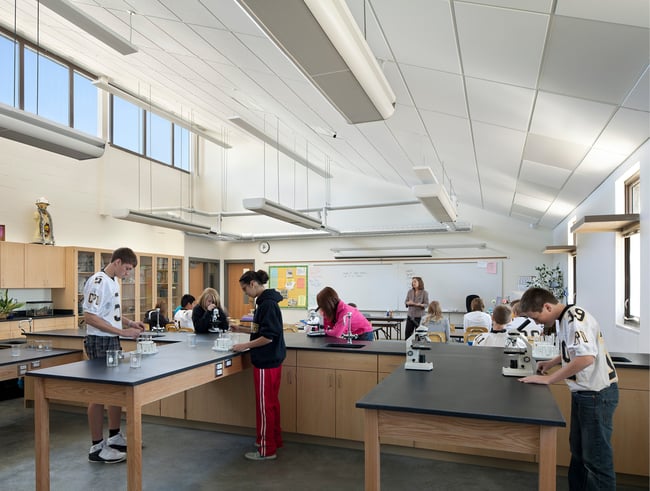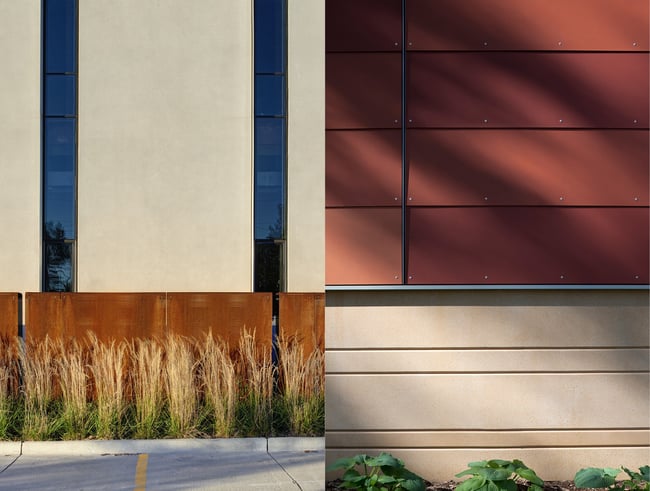What is a Life-Cycle Cost Analysis on a Building Project?

A building is a long-term investment. Although construction costs may be top of mind during the architectural process, it’s important to remember the costs of maintenance, utilities, and replacements.
One method for lowering these long-term costs is a life-cycle cost analysis. Typically performed in the early stages of the design process, the analysis helps you evaluate the total cost of building ownership and compare options for systems that affect performance.
Before starting a building project, it helps to understand life-cycle costs and their significance. This article will discuss life-cycle costs for building systems and materials and how to use the analysis when making decisions.
Life-Cycle Cost Analysis for Building Systems
A life-cycle cost analysis is a method for assessing the total cost of a building system over its lifetime. It accounts for the costs of acquiring, owning, maintaining, and disposing of the system.
Often, projects that use federal and state funding are required to perform a life-cycle cost when selecting systems that affect energy use, including:
- Mechanical and HVAC systems
- Lighting systems
- Building thermal envelope systems
- On-site electrical generation, like photovoltaic systems
- Domestic hot water systems
Federal facilities must be designed to achieve the lowest life-cycle cost. Requirements for state-funded projects will differ state-to-state.

A life-cycle cost analysis can compare options for heating and cooling systems.
Although not required, large commercial projects may also include a life-cycle cost analysis. In some cases, utility providers will cover the cost of the analysis and even offer rebates for surpassing baseline energy codes.
Generally, a third-party energy consultant completes the analysis. If the cost of the analysis is not covered by the local utility provider, your architect can factor this service into their fee.
Life-Cycle Cost Analysis for Building Materials
While life-cycle costs are associated with building systems, every project component has a long-term cost. Interior materials, for example, face plenty of wear and tear. Choosing a durable material that requires less maintenance can save you money in the long run.
During the design process, your design team will discuss the life-cycle costs of materials like:
- Flooring options
- Façade options
- Finishes
- Hardware
- Doors and windows
Generally, an analysis of materials is more informal than a systems analysis. It can be completed by an architect or interior designer, rather than a third-party energy consultant.
Learn more by reading about life-cycle costs for interior materials.

A life-cycle cost analysis can help with choosing façade treatments.
Using a Life-Cycle Cost Analysis
A life-cycle cost analysis provides a way to strategically lower the costs of building ownership. The process will involve a dialogue between your team, the energy consultant, and the design team, including the architect, mechanical, and electrical engineers.
By reviewing the data, the group will determine which strategies make the most sense for your use of the building—from a financial and maintenance perspective. Your architect will act as your advocate and offer their opinions on which systems should be used. Through this process, you will understand which systems provide a Return on Investment (ROI).
Often, systems with a lower life-cycle cost have a higher initial cost. Although you will pay more upfront, you will see a payback over the building’s lifetime.
The goal is to optimize the design of systems and assemblies, find options that fit your initial budget, and lower long-term expenses. It is important to think strategically and keep the cost of maintenance, utilities, and replacements in mind.
Learn About the Long-Term Costs of Building Ownership
A life-cycle cost analysis is an effective way to factor long-term costs into decision-making. The analysis helps you compare options for the systems with the largest impact on performance, including mechanical and envelope systems.
Beyond the third-party analysis, your architect will likely discuss life cycle costs throughout the design process, especially when selecting building materials. Understanding the economic impact of each decision can help you achieve a return on your investment.
Maintenance, replacements, and utilities are only some of the long-term costs of building ownership. When making design decisions, it’s important to think about occupants, their experience, and the cost of your personnel.
Learn more by reading about the long-term costs to consider on a building project.